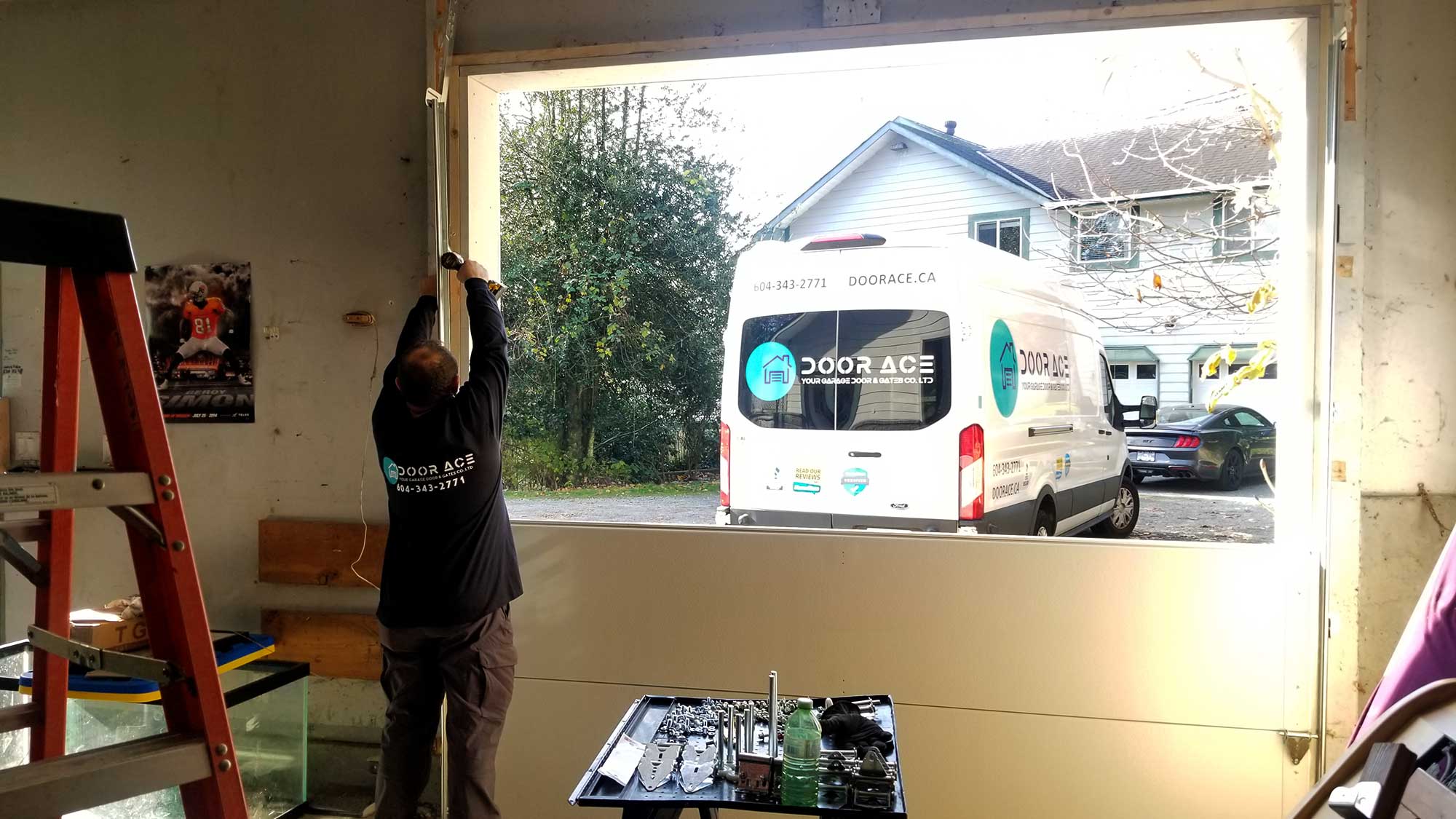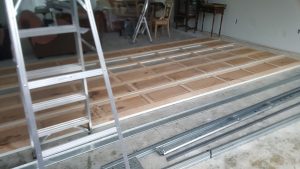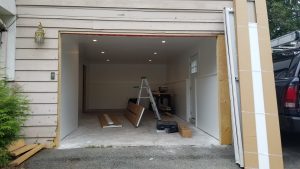Keeping your garage door in good working order is essential for ensuring the safety, security, and functionality of your home. Regular maintenance can prevent costly repairs and extend the life of your garage door. This DIY guide will walk you through essential maintenance tasks, seasonal care, and common repairs you can do yourself.
Routine Maintenance Tasks
Visual Inspection
Importance of checking for visible damage and wear: Performing a visual inspection of your garage door is crucial for identifying problems early. Regular checks help you spot issues like wear and tear, which can escalate into significant problems if left unattended.
Key areas to inspect:
- Springs: Look for signs of rust, wear, or damage.
- Cables: Ensure they are intact and not frayed.
- Rollers: Check for wear and smooth operation.
- Tracks: Ensure they are aligned and free of debris.
How to identify potential problems early:
- Springs: If you notice gaps or signs of wear, it might be time for a replacement.
- Cables: Fraying or rusting cables need immediate attention to avoid accidents.
- Rollers: Worn rollers can cause the door to operate noisily or jerkily.
- Tracks: Misaligned or obstructed tracks can prevent the door from opening or closing smoothly.
Lubrication
Benefits of regular lubrication: Lubrication reduces friction and wear on moving parts, ensuring smooth operation and extending the life of your garage door components.
Step-by-step guide on how to lubricate springs, rollers, and hinges:
- Clean the parts: Wipe down the springs, rollers, and hinges to remove dust and debris.
- Apply lubricant: Use a silicone-based lubricant or white lithium grease. Spray a light coat on the springs, rollers, and hinges.
- Operate the door: Open and close the door several times to distribute the lubricant evenly.
Recommended lubricants and how often to apply them:
- Silicone spray: Ideal for metal and plastic parts.
- White lithium grease: Great for metal parts that endure heavy use.
- Frequency: Lubricate your garage door every six months, or more often if it gets heavy use.
Testing Balance and Safety Features
How to test the balance of your garage door:
- Disconnect the opener: Pull the release handle to operate the door manually.
- Lift the door halfway: It should stay in place without falling or rising.
- Adjust if necessary: If the door doesn’t stay balanced, adjust the spring tension or call a professional.
Ensuring the auto-reverse mechanism is functioning correctly:
- Place an object under the door: A 2×4 or similar object will work.
- Close the door: It should reverse immediately upon contact with the object.
- Adjust the sensitivity: If the door doesn’t reverse, adjust the opener’s sensitivity settings.
Safety tips for testing and adjustments:
- Always disconnect the opener before performing any tests.
- Use caution when adjusting springs and cables, as they are under high tension.
- If you’re unsure about any adjustments, consult a professional.
Seasonal Garage Door Maintenance
Preparing for Winter
How cold weather affects garage doors: Cold weather can cause metal components to contract, leading to misalignment and difficulty operating the door.
Winterizing tips to prevent freezing and ensure smooth operation:
- Lubricate moving parts: Use a lubricant that can withstand cold temperatures.
- Inspect and replace weatherstripping: Ensure it seals properly to prevent drafts and keep the garage warm.
- Check the insulation: Make sure your garage door is adequately insulated to improve energy efficiency.
Spring Cleaning and Maintenance
Removing debris and cleaning garage door components:
- Clean the tracks: Remove dirt and debris to ensure smooth operation.
- Wash the door: Use mild detergent and water to clean the door’s surface.
Inspecting and repairing weatherstripping:
- Check for gaps: Replace any damaged or missing weatherstripping.
- Seal properly: Ensure it provides a good seal to improve energy efficiency.
Preparing the door for increased usage during warmer months:
- Lubricate moving parts: Reapply lubricant as needed.
- Inspect for wear: Check all components for signs of wear and replace as necessary.
Summer and Fall Maintenance Tips
Handling expansion and contraction due to temperature changes:
- Adjust the tracks: Ensure they are properly aligned to accommodate expansion and contraction.
- Check the springs: Make sure they are properly tensioned.
Checking and replacing worn-out parts:
- Inspect rollers and hinges: Replace any that are worn or damaged.
- Check cables: Look for signs of wear or fraying.
Preventing rust and corrosion:
- Apply a protective coat: Use a rust-inhibiting spray on metal parts.
- Keep the door clean: Regularly wash the door to remove corrosive elements.
Common DIY Repairs
Fixing Misaligned Tracks
Symptoms of misaligned tracks:
- The door is difficult to open or close.
- The door makes grinding or scraping noises.
Step-by-step guide to realigning tracks safely:
- Loosen the bolts: Use a wrench to loosen the track bolts slightly.
- Tap the tracks: Gently tap the tracks back into alignment with a rubber mallet.
- Tighten the bolts: Secure the tracks once they are properly aligned.
Tools needed and safety precautions:
- Wrench, rubber mallet, level.
- Wear gloves and safety goggles to protect against injuries.
Replacing Weatherstripping
Importance of weatherstripping for energy efficiency: Weatherstripping seals the garage door, preventing drafts and reducing energy costs.
How to remove old weatherstripping:
- Use a putty knife to pry off the old weatherstripping.
- Clean the surface to remove any adhesive residue.
Installing new weatherstripping properly:
- Measure and cut the new weatherstripping to fit.
- Press it firmly into place, ensuring a good seal.
Tightening Loose Hardware
Identifying loose bolts and screws:
- Inspect all moving parts and connections for looseness.
Proper techniques for tightening hardware:
- Use a wrench or screwdriver to tighten bolts and screws.
- Ensure they are snug but not overly tight, which can cause damage.
Ensuring the stability and safety of the door:
- Regularly check and tighten hardware to maintain a secure and stable door.
By following these DIY maintenance tips and performing regular inspections, you can keep your garage door in optimal condition, ensuring its longevity and reliable operation. Regular maintenance not only prevents costly repairs but also enhances the safety and efficiency of your garage door system.






